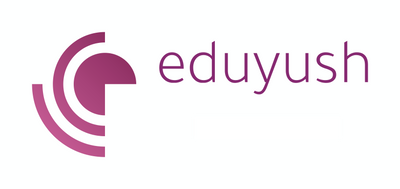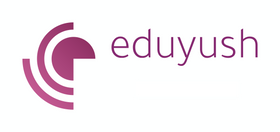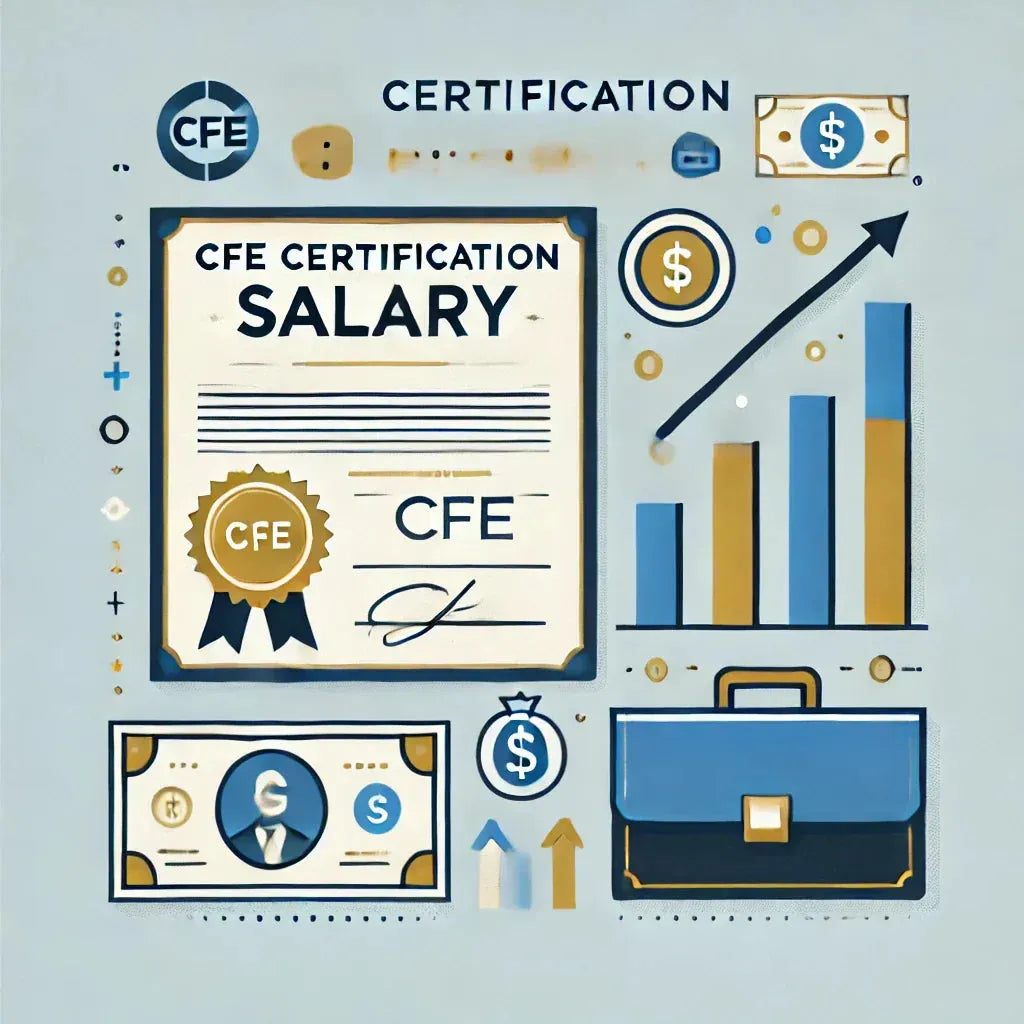100+ US GAAP Interview Questions & Answers 2025 Guide
100+ US GAAP Interview Questions & Answers 2025: Complete Guide
Preparing for a US GAAP interview? This comprehensive guide contains 100+ interview questions with detailed answers, covering everything from basic GAAP principles to advanced technical scenarios. Whether you're a fresher or experienced professional, this guide will help you ace your US accounting interview.
What is GAAP Experience? {#what-is-gaap-experience}
GAAP experience refers to practical, hands-on knowledge of US Generally Accepted Accounting Principles in real-world business situations. This includes:
Technical Proficiency:
- Understanding and applying US GAAP accounting standards
- Preparing financial statements per GAAP requirements
- Implementing new accounting standards and updates
- Performing GAAP compliance assessments
Practical Application:
- Converting IFRS to US GAAP for consolidations
- Researching complex accounting treatments
- Supporting external audits with GAAP documentation
- Training teams on GAAP requirements and changes
What Constitutes GAAP Experience:
- Financial Reporting roles at US companies or subsidiaries
- Public Accounting experience with US GAAP clients
- GAAP Conversion projects and implementations
- Technical Accounting research and documentation
- Audit Support for GAAP compliance reviews
Why US GAAP Knowledge is Critical in 2025 {#why-critical}
US GAAP expertise is essential for:
Career Opportunities:
- US-based multinational corporations
- Public accounting firms serving US clients
- Financial services and banking institutions
- Technology companies with US operations
- Healthcare and pharmaceutical organizations
Technical Demands:
- Revenue Recognition (ASC 606) implementation and ongoing compliance
- Lease Accounting (ASC 842) adoption and application
- Credit Loss Standards (ASC 326) for financial instruments
- Fair Value Measurements and impairment testing
- Consolidation Rules and variable interest entities
Regulatory Requirements:
- SOX compliance for public companies
- SEC reporting requirements and deadlines
- Enhanced cybersecurity and ESG disclosures
- PCAOB auditing standards alignment
Most Asked US GAAP Interview Questions {#most-asked-questions}
1. What is US GAAP and why is it important?
Model Answer: "US GAAP (Generally Accepted Accounting Principles) is the comprehensive framework of accounting standards, principles, and procedures used by companies in the United States to prepare financial statements. It's governed by the Financial Accounting Standards Board (FASB) and codified in the Accounting Standards Codification (ASC).
Importance:
- Consistency: Provides uniform standards for financial reporting across all US companies
- Transparency: Ensures stakeholders receive reliable, comparable financial information
- Regulatory Compliance: Required for public companies by the SEC
- Investor Confidence: Builds trust in US capital markets through standardized reporting
- Economic Decision-Making: Enables informed investment and credit decisions"
2. How does US GAAP differ from IFRS?
Model Answer: "While both are high-quality frameworks, key differences include:
Conceptual Approach:
- US GAAP: Rules-based with detailed guidance and specific requirements
- IFRS: Principles-based with broader guidance requiring more judgment
Specific Differences:
- Inventory: GAAP prohibits LIFO method reversal; IFRS prohibits LIFO entirely
- Development Costs: GAAP expenses most development costs; IFRS allows capitalization when criteria are met
- Revaluation: GAAP uses historical cost; IFRS permits fair value revaluation for certain assets
- Component Depreciation: IFRS requires component depreciation; GAAP permits but doesn't require
Geographic Usage:
- US GAAP: Primarily United States and some US subsidiaries globally
- IFRS: Used by 140+ countries worldwide, including EU, Canada, Australia"
3. Explain the revenue recognition principle under ASC 606.
Model Answer: "ASC 606 establishes a five-step model for revenue recognition:
Step 1: Identify the Contract - Establish enforceable contract with commercial substance Step 2: Identify Performance Obligations - Determine distinct goods/services promised Step 3: Determine Transaction Price - Calculate total consideration expected Step 4: Allocate Transaction Price - Assign price to each performance obligation based on standalone selling prices Step 5: Recognize Revenue - Record revenue when (or as) performance obligations are satisfied
Key Concepts:
- Control Transfer: Revenue recognized when customer obtains control
- Over Time vs. Point in Time: Determines timing of recognition
- Variable Consideration: Estimated using expected value or most likely amount
- Contract Modifications: Treated as separate contract or modification of existing contract"
4. What is the difference between capital and operating leases under ASC 842?
Model Answer: "ASC 842 classifies leases as finance (capital) or operating leases:
Finance Lease Criteria (any one triggers classification):
- Ownership Transfer: Lease transfers ownership by end of term
- Purchase Option: Lessee reasonably certain to exercise bargain purchase option
- Lease Term: Lease term is major part of economic life (≥75% bright line removed but still relevant)
- Present Value: PV of lease payments ≥ substantially all fair value (≥90% bright line removed)
- Specialized Asset: Asset so specialized it has no alternative use to lessor
Accounting Differences:
- Finance Lease: Recognize interest expense and amortization separately
- Operating Lease: Recognize single lease expense (straight-line for most leases)
- Both: Recognize right-of-use asset and lease liability on balance sheet"
5. How do you handle impairment testing under US GAAP?
Model Answer: "Impairment testing varies by asset type:
Goodwill (ASC 350):
- Annual Test: Required at reporting unit level
- Qualitative Assessment: Optional first step to determine if quantitative test needed
- Quantitative Test: Compare fair value to carrying amount of reporting unit
- Impairment: Recognize when carrying amount exceeds fair value
Long-Lived Assets (ASC 360):
- Triggering Events: Test when circumstances indicate carrying amount may not be recoverable
- Recoverability Test: Compare carrying amount to undiscounted future cash flows
- Measurement: If failed, impairment = carrying amount minus fair value
Indefinite-Lived Intangibles:
- Annual Test: Compare fair value to carrying amount
- Qualitative Option: Available to bypass quantitative testing"
6. Explain consolidation requirements under US GAAP.
Model Answer: "Consolidation under ASC 810 depends on control determination:
Voting Interest Entities:
- Control: Generally >50% voting control
- Consolidate: Parent consolidates subsidiaries it controls
- Exceptions: Temporary control, bankruptcy, severe restrictions
Variable Interest Entities (VIEs):
- Primary Beneficiary: Entity with power to direct significant activities AND obligation to absorb losses or right to receive benefits
- Identification: Evaluate if entity is VIE based on equity investment and characteristics
- Ongoing Assessment: Reassess VIE status and primary beneficiary quarterly
Consolidation Process:
- Eliminate: Intercompany transactions and balances
- Noncontrolling Interests: Present separately in equity
- Foreign Subsidiaries: Translate using current rate method"
7. How does ASC 326 (Current Expected Credit Losses) work?
Model Answer: "ASC 326 requires forward-looking expected credit loss model:
Scope:
- Financial Assets: Loans, debt securities, trade receivables, off-balance sheet commitments
- Not Applicable: Available-for-sale equity securities, loans measured at fair value
CECL Model:
- Expected Losses: Estimate losses expected over remaining life
- Historical Information: Use past events and current conditions
- Reasonable/Supportable Forecasts: Include forward-looking information
- Measurement: Record allowance for lifetime expected losses immediately
Implementation:
- Methodology: Can use various approaches (discounted cash flow, loss rate, aging)
- Documentation: Support methodology and significant judgments
- Ongoing: Reassess each reporting period"
8. What are the key principles underlying US GAAP?
Model Answer: "US GAAP is built on fundamental principles:
Qualitative Characteristics:
- Relevance: Information influences economic decisions
- Faithful Representation: Complete, neutral, and free from error
- Comparability: Enables comparison across entities and periods
- Verifiability: Independent observers could reach same conclusions
- Timeliness: Available when needed for decision-making
- Understandability: Comprehensible to users with reasonable business knowledge
Recognition Principles:
- Accrual Basis: Record transactions when they occur, not when cash exchanged
- Revenue Recognition: Recognize when performance obligations satisfied
- Matching: Match expenses with related revenues in same period
- Conservatism: When uncertain, choose method that least overstates assets/income"
9. How do you research US GAAP guidance?
Model Answer: "Effective GAAP research follows systematic approach:
Primary Sources:
- ASC (Accounting Standards Codification): Authoritative source for US GAAP
- SEC Guidance: Rules and interpretations for public companies
- FASB Updates: New standards and amendments
Research Process:
- Identify Issue: Clearly define accounting question
- Search ASC: Use keyword search and topic navigation
- Analyze Guidance: Review relevant sections, examples, and implementation guides
- Consider Analogies: Look at similar transactions if direct guidance unavailable
- Document Conclusion: Support position with specific ASC references
Tools:
- FASB Codification: Primary research platform
- Professional Literature: Technical accounting guides and interpretations
- Firm Resources: Internal accounting manuals and precedents"
10. Describe share-based compensation accounting under ASC 718.
Model Answer: "ASC 718 requires fair value measurement of share-based awards:
Scope:
- Employee Awards: Stock options, restricted stock, ESPPs
- Non-Employee Awards: Consultant and director compensation
Measurement:
- Grant Date Fair Value: Use appropriate valuation model (Black-Scholes, binomial, Monte Carlo)
- Service Period: Generally the vesting period
- Recognition: Expense over service period with forfeitures estimated
Award Types:
- Stock Options: Value using option pricing model
- Restricted Stock: Fair value equals stock price adjusted for dividend restrictions
- Performance Awards: Include probability assessment of performance conditions
- Market Conditions: Included in grant date fair value calculation"
11. How do you handle foreign currency translation?
Model Answer: "Foreign currency accounting depends on the relationship:
Foreign Currency Transactions (ASC 830):
- Initial Recording: Translate at spot rate on transaction date
- Subsequent Measurement: Monetary items remeasured at current rate
- Gains/Losses: Generally recognize in current period income
Foreign Currency Translation:
- Functional Currency: Currency of primary economic environment
- Current Rate Method: Used when foreign currency is functional currency
- Translation: Assets/liabilities at current rate, income statement at average rate
- CTA: Translation adjustments go to other comprehensive income
Remeasurement:
- Temporal Method: Used when parent currency is functional currency
- Monetary/Non-monetary: Different rates for different items
- Gains/Losses: Flow through current period income"
12. Explain business combinations under ASC 805.
Model Answer: "ASC 805 requires acquisition method for business combinations:
Acquisition Method Steps:
- Identify Acquirer: Entity that obtains control
- Determine Acquisition Date: Date control is obtained
- Recognize/Measure Assets and Liabilities: At fair value
- Recognize Goodwill: Excess consideration over net identifiable assets
Measurement:
- Consideration Transferred: Fair value including contingent consideration
- Identifiable Assets: Recognize at fair value if meet recognition criteria
- Goodwill: Not amortized but tested annually for impairment
- Bargain Purchase: Recognize gain in income immediately
Subsequent Measurement:
- Contingent Consideration: Remeasure at fair value each period
- Acquisition Costs: Expense as incurred except debt/equity issuance costs"
13. What is the difference between temporary and permanent differences in tax accounting?
Model Answer: "ASC 740 distinguishes between temporary and permanent differences:
Temporary Differences:
- Definition: Differences between book and tax basis that reverse over time
- Examples: Depreciation methods, warranty reserves, bad debt allowances
- Accounting: Create deferred tax assets/liabilities
- Future Impact: Will affect future tax returns when they reverse
Permanent Differences:
- Definition: Items included in book income but never in taxable income (or vice versa)
- Examples: Municipal bond interest, meals and entertainment, life insurance premiums
- Accounting: No deferred tax impact, affects effective tax rate
- No Reversal: Never affect future tax returns
Deferred Tax Calculation:
- Enacted Rates: Use tax rates expected when differences reverse
- Valuation Allowance: Required if more likely than not that deferred tax assets won't be realized"
14. How do you account for derivatives and hedging?
Model Answer: "ASC 815 requires fair value accounting for derivatives:
All Derivatives:
- Recognition: Record at fair value on balance sheet
- Measurement: Mark-to-market each reporting period
- Default Treatment: Changes in fair value flow through income
Hedge Accounting (when criteria met):
- Fair Value Hedges: Hedge item also marked to fair value for hedged risk
- Cash Flow Hedges: Effective portion of derivative gains/losses to OCI
- Net Investment Hedges: Similar to cash flow hedge for foreign operations
Hedge Effectiveness:
- Prospective: Must expect effectiveness between 80-125%
- Retrospective: Test actual effectiveness each period
- Discontinuation: Required if hedge becomes ineffective"
15. Describe segment reporting requirements under ASC 280.
Model Answer: "ASC 280 requires public companies to report operating segments:
Identification Criteria:
- Business Activities: Engages in revenue-earning activities
- Discrete Information: Operating results regularly reviewed by CODM
- Chief Operating Decision Maker: Determines resource allocation and performance assessment
Reportable Segments:
- Quantitative Thresholds: 10% of combined revenues, assets, or profits/losses
- Aggregation: Allowed if segments have similar economic characteristics
- Minimum Coverage: Reportable segments must represent ≥75% of total revenue
Required Disclosures:
- Segment Profit/Loss: Measure reported to CODM
- Segment Assets: If regularly provided to CODM
- Reconciliations: Segment amounts to consolidated totals
- Geographic Information: Revenues and long-lived assets by country"
Basic GAAP Questions for Freshers {#basic-gaap-questions}
Entry-Level US GAAP Knowledge
1. What are the four basic financial statements required under US GAAP?
Model Answer: "The four basic financial statements under US GAAP are:
Income Statement (Statement of Operations):
- Shows revenues, expenses, and net income for a period
- Measures company's profitability and operating performance
Balance Sheet (Statement of Financial Position):
- Shows assets, liabilities, and equity at a point in time
- Must balance: Assets = Liabilities + Equity
Statement of Cash Flows:
- Shows cash receipts and payments for operating, investing, and financing activities
- Reconciles beginning and ending cash balances
Statement of Stockholders' Equity:
- Shows changes in equity accounts during the period
- Includes retained earnings, capital transactions, and other comprehensive income"
2. Explain the matching principle in US GAAP.
Model Answer: "The matching principle requires expenses to be recorded in the same period as the related revenues they help generate. This ensures accurate measurement of periodic performance.
Key Applications:
- Cost of Goods Sold: Match with related sales revenue
- Depreciation: Allocate asset cost over periods benefiting from its use
- Warranties: Accrue estimated warranty costs when products are sold
- Commissions: Record sales commissions when related sales occur
Example: If we sell a product in December with a 12-month warranty, we record the sale revenue in December and also accrue the estimated warranty expense in December, even though warranty costs may be incurred in future months."
3. What is the difference between cash and accrual accounting?
Model Answer: "Cash Basis Accounting:
- Records transactions only when cash is received or paid
- Simple but doesn't provide accurate periodic performance measurement
- Generally not acceptable under GAAP for companies with inventory
Accrual Basis Accounting:
- Records transactions when they occur, regardless of cash timing
- Required under US GAAP for most businesses
- Provides better matching of revenues and expenses
- More complex but gives accurate periodic performance
Example: A sale made in December on 30-day terms would be recorded as revenue in December under accrual accounting, but only in January (when cash received) under cash accounting."
4. What are current vs. non-current assets and liabilities?
Model Answer: "Current Assets:
- Expected to be converted to cash or used within one year or operating cycle
- Examples: Cash, accounts receivable, inventory, prepaid expenses
- Listed by liquidity (most liquid first)
Non-Current Assets:
- Expected to benefit the company for more than one year
- Examples: Property, plant & equipment, intangible assets, long-term investments
- Also called long-term or fixed assets
Current Liabilities:
- Due within one year or operating cycle
- Examples: Accounts payable, short-term debt, accrued expenses
Non-Current Liabilities:
- Due beyond one year
- Examples: Long-term debt, pension obligations, deferred tax liabilities"
Technical US GAAP Questions {#technical-usgaap}
Advanced Technical Scenarios
1. How do you account for a sale-leaseback transaction under ASC 842?
Model Answer: "Sale-leaseback accounting depends on whether the transfer qualifies as a sale under ASC 606:
If Transfer is a Sale:
- Seller-Lessee: Recognize gain/loss only for rights transferred to buyer-lessor
- Calculation: Compare original carrying amount to lease payments and lease liability
- Gain Deferral: Defer gain related to retained right-of-use asset
If Transfer is Not a Sale:
- Financial Transaction: Treat as financing arrangement
- No Gain/Loss: Continue to recognize asset and record liability for cash received
- Examples: Repurchase agreements, excessive lease payments
Key Factors:
- Control Transfer: Apply ASC 606 sale criteria
- Lease Classification: Determine if finance or operating lease
- Measurement: Use incremental borrowing rate for lease liability"
2. Explain variable interest entity (VIE) analysis.
Model Answer: "VIE analysis under ASC 810 involves multiple steps:
Step 1: VIE Identification
- Insufficient Equity: Total equity investment insufficient to finance activities
- Voting Rights: Equity holders lack decision-making rights
- Losses/Returns: Equity holders not exposed to expected losses/returns
Step 2: Primary Beneficiary Determination
- Power: Ability to direct activities most significantly impacting performance
- Economics: Obligation to absorb losses or right to receive benefits
Step 3: Ongoing Assessment
- Quarterly Evaluation: Reassess VIE status and primary beneficiary
- Change Triggers: Modifications to governing documents, equity transactions
Common Examples:
- SPEs: Special purpose entities for securitizations
- Joint Ventures: With disproportionate voting/economic arrangements
- Management Arrangements: Significant service contracts with decision-making rights"
3. How do you handle contract modifications under ASC 606?
Model Answer: "Contract modifications are changes to contract scope or price:
Separate Contract (Account Prospectively):
- Distinct Goods/Services: Additional goods/services are distinct
- Standalone Selling Price: Priced at standalone selling price
- Treatment: Account as separate contract
Modification of Existing Contract:
- Termination and Creation: Treat as termination of old contract and creation of new contract
- Cumulative Catch-up: Adjust revenue to date for new transaction price
Prospective Treatment:
- Remaining Obligations: Allocate remaining transaction price to remaining performance obligations
- Forward-looking: No adjustment to previously recognized revenue
Evaluation Criteria:
- Distinct: Can customer benefit from goods/services on their own?
- Standalone Price: Is pricing reflective of standalone selling price?"
Behavioral & Experience Questions {#behavioral-experience}
Demonstrating GAAP Experience
1. Describe your most complex US GAAP accounting issue and how you resolved it.
Model Answer using STAR method: "Situation: In my previous role as Senior Accountant at a technology company, we acquired a smaller firm and needed to account for the business combination under ASC 805 while also evaluating revenue arrangements that crossed multiple performance obligations under ASC 606.
Task: I was responsible for determining the fair value of acquired assets, particularly customer relationships and developed technology, while also ensuring proper revenue recognition for bundled software and services.
Action: I researched ASC 805 guidance on intangible asset valuation, consulted with external valuation specialists for fair value measurements, coordinated with revenue accounting team to identify distinct performance obligations, and documented our accounting positions with specific ASC references.
Result: Successfully completed the acquisition accounting with $2.3M in identified intangible assets, established proper revenue recognition treatment for ongoing contracts, and received clean audit review with no adjustments required."
2. How do you stay current with US GAAP changes and updates?
Model Answer: "I maintain current GAAP knowledge through multiple channels:
Formal Sources:
- FASB Website: Regularly review new ASUs and implementation guidance
- Professional Development: Attend CPE courses and AICPA conferences
- Technical Publications: Subscribe to accounting firm technical newsletters
- Webinars: Participate in FASB and professional organization webinars
Practical Application:
- Implementation Guides: Review FASB implementation examples
- Peer Discussion: Network with other professionals facing similar issues
- Internal Training: Lead training sessions to reinforce my own understanding
- Practice Integration: Apply new standards in current role when applicable
Documentation:
- Technical Library: Maintain reference files of key guidance
- Issue Tracking: Monitor ongoing standards development
- Impact Assessment: Evaluate how changes affect our organization"
3. Describe a time when you had to explain complex GAAP concepts to non-accounting stakeholders.
Model Answer: "Situation: Our company was implementing ASC 842 (lease accounting) and I needed to explain the balance sheet impact to our CFO and board of directors.
Challenge: The executives were concerned about the significant increase in assets and liabilities without understanding the operational and cash flow implications.
Approach:
- Business Terms: Explained leases as 'renting space/equipment' that creates both a right to use and obligation to pay
- Visual Aids: Created simple diagrams showing balance sheet impact
- Cash Flow Focus: Emphasized that actual cash flows don't change, only the presentation
- Comparative Analysis: Showed before/after financial ratios and debt covenant implications
Result: Board approved implementation timeline, and executives became advocates for early adoption to align with industry peers and improve transparency."
Advanced & Complex US GAAP Questions {#advanced-complex}
Sophisticated Technical Issues
1. How do you account for cryptocurrency transactions under US GAAP?
Model Answer: "Cryptocurrency accounting under current US GAAP is evolving:
Current Guidance:
- No Specific Standard: No authoritative guidance specifically for cryptocurrencies
- Intangible Assets: Generally treated as indefinite-lived intangible assets under ASC 350
- Historical Cost: Initially recorded at cost, no amortization
Measurement:
- Impairment Only: Test for impairment when indicators present
- Fair Value: Impairment measured as excess of carrying amount over fair value
- No Upward Revaluation: Cannot write up if fair value increases
Practical Considerations:
- Active Markets: Use quoted prices when available
- Valuation Challenges: Consider market volatility and exchange differences
- Mining Activities: Account for costs and rewards of mining operations
- Future Guidance: FASB considering specific cryptocurrency guidance"
2. Explain accounting for government grants under US GAAP.
Model Answer: "US GAAP lacks comprehensive government grant guidance, requiring analogy:
Income Approach (Most Common):
- Conditional vs. Unconditional: Determine if grant has barriers to overcome
- Recognition: Recognize income when conditions substantially met
- Presentation: Generally present as income, not contra-expense
Capital Approach (Limited Use):
- Investment in Entity: Treat as capital contribution
- Rare Application: Generally only when government becomes equity holder
Key Considerations:
- Grant Conditions: Evaluate compliance requirements and measurement milestones
- Refund Provisions: Consider likelihood of required repayment
- Period Matching: Match grant income to related expenses when possible
- Disclosure: Provide adequate information about grant terms and conditions
Common Examples:
- R&D Grants: Match to research expenses as incurred
- PPP Loans: Apply ASC 470 debt guidance unless forgiveness criteria met"
3. How do you handle contingencies and loss accruals under ASC 450?
Model Answer: "ASC 450 requires assessment of loss contingencies:
Recognition Criteria:
- Probable: Likely to occur (generally >75% likelihood)
- Reasonably Estimable: Can determine amount or range of loss
- Both Required: Must meet both criteria to accrue
Measurement:
- Best Estimate: Use most likely amount in range
- Range with No Best Estimate: Record minimum amount
- Additional Exposure: Disclose maximum exposure if material
Common Examples:
- Litigation: Assess with legal counsel, consider settlement probability
- Environmental: Evaluate cleanup obligations and timing
- Warranties: Estimate based on historical experience and current factors
- Self-Insurance: Accrue for claims incurred but not yet reported
Disclosure Requirements:
- Remote Losses: Generally no disclosure required
- Reasonably Possible: Disclose nature and amount/range if material
- Probable but Not Estimable: Describe contingency"
Industry-Specific US GAAP Questions {#industry-specific}
Specialized Industry Applications
1. How does revenue recognition work for software companies under ASC 606?
Model Answer: "Software revenue recognition involves identifying distinct performance obligations:
Common Performance Obligations:
- Software License: Right to use intellectual property
- Implementation Services: Setup and customization services
- Post-Contract Support: Updates, upgrades, and technical support
- Hosting Services: Software-as-a-Service arrangements
Key Considerations:
- Functional vs. Symbolic IP: Determines timing of license revenue recognition
- Standalone Selling Prices: Establish pricing for each performance obligation
- Contract Modifications: Evaluate changes to scope or pricing
- Variable Consideration: Usage-based fees and performance bonuses
Timing:
- Point in Time: Functional IP licenses, completed implementations
- Over Time: Symbolic IP licenses, ongoing services, SaaS arrangements
Common Challenges:
- Bundled Arrangements: Separating license from services
- Customer-Specific Software: Determining if license exists
- Milestone Arrangements: Evaluating performance obligation completion"
2. Explain banking industry loan loss provisioning under ASC 326.
Model Answer: "ASC 326 (CECL) fundamentally changed bank loan loss accounting:
CECL Model Requirements:
- Lifetime Losses: Estimate expected losses over remaining contractual life
- Day 1 Recognition: Record allowance immediately upon loan origination
- Forward-Looking: Incorporate reasonable and supportable forecasts
Methodology Options:
- Discounted Cash Flow: Compare expected vs. contractual cash flows
- Loss Rate: Apply historical loss rates adjusted for current conditions
- Aging Schedule: Traditional approach enhanced with lifetime perspective
Key Components:
- Historical Information: Analyze past loss experience
- Current Conditions: Adjust for present environment
- Reasonable Forecasts: Include economic projections
Implementation Challenges:
- Data Requirements: Need detailed historical loss data
- Model Documentation: Support methodology and assumptions
- Forecasting: Incorporate macroeconomic factors appropriately"
People Also Ask {#people-also-ask}
What are some good interview questions to ask an accountant to determine their knowledge of GAAP?
Effective questions to assess GAAP knowledge include:
Technical Competency:
- "Walk me through the five-step revenue recognition model under ASC 606"
- "How would you test goodwill for impairment under current US GAAP?"
- "Explain the difference between finance and operating leases under ASC 842"
- "How do temporary differences create deferred tax assets and liabilities?"
Application Skills:
- "Describe a complex accounting issue you've researched and resolved"
- "How do you ensure compliance with new GAAP standards?"
- "What's your process for documenting GAAP positions for auditors?"
- "How do you handle GAAP conversions from IFRS or other frameworks?"
Current Knowledge:
- "What recent GAAP changes have affected your work?"
- "How has ASC 326 (current expected credit losses) impacted financial institutions?"
- "What upcoming GAAP changes are you monitoring?"
What is considered GAAP experience?
GAAP experience encompasses:
Technical Experience:
- Financial Statement Preparation under US GAAP requirements
- Technical Research using FASB Codification and related guidance
- Implementation of new accounting standards and updates
- Documentation of accounting positions and policy decisions
Practical Application:
- Public Company Reporting including SEC filings and SOX compliance
- Audit Support providing GAAP documentation and explanations
- Training and Education on GAAP requirements and changes
- Cross-Border Conversions between GAAP and IFRS
Industry Exposure:
- Specialized Industries with unique GAAP requirements
- Complex Transactions requiring advanced GAAP analysis
- Regulatory Reporting beyond basic financial statements
How do I demonstrate GAAP experience in interviews?
Prepare Specific Examples:
- Use STAR method to describe complex GAAP issues you've resolved
- Quantify impact of GAAP implementations or corrections
- Discuss technical research methodology and sources used
- Explain how you've trained others on GAAP requirements
Show Current Knowledge:
- Reference recent FASB updates and their business impact
- Discuss ongoing GAAP projects or implementations
- Demonstrate familiarity with ASC organization and research tools
- Connect GAAP requirements to business decisions and strategy
Technical Competency:
- Walk through financial statement preparation process
- Explain key estimates and judgments in GAAP application
- Describe interaction with auditors on technical issues
- Discuss automation and controls for GAAP compliance
What certifications help with GAAP knowledge?
Professional Certifications:
- CPA (Certified Public Accountant): Comprehensive GAAP coverage in exam and CPE
- CMA (Certified Management Accountant): Includes financial reporting and GAAP
- CISA (Certified Information Systems Auditor): IT controls and GAAP compliance
Specialized Training:
- AICPA GAAP Courses: Targeted training on specific standards
- FASB Implementation Courses: Direct from standard setters
- University Programs: Accounting degrees with GAAP emphasis
- Professional Firm Training: Big 4 and other firm technical programs
Continuing Education:
- Annual CPE Requirements: Stay current with GAAP changes
- Industry Conferences: AICPA, state CPA societies, and specialized forums
- Technical Publications: Subscription to accounting guidance updates
How often does US GAAP change?
Standard-Setting Process:
- Continuous Evolution: FASB regularly issues Accounting Standards Updates (ASUs)
- Major Changes: Significant standards every 3-5 years (606, 842, 326)
- Technical Corrections: Minor clarifications and improvements ongoing
- Implementation Guidance: Additional clarification during adoption periods
Recent Major Changes:
- 2018: Revenue Recognition (ASC 606) effective
- 2019: Leases (ASC 842) effective for public companies
- 2020: Credit Losses (ASC 326) effective for large public companies
- 2023: Reference Rate Reform guidance concluded
Staying Current:
- FASB Website: Primary source for new standards and interpretations
- Professional Development: Required CPE includes GAAP updates
- Industry Resources: Accounting firms publish implementation guides
- Early Adoption: Many standards allow early implementation
What's the difference between US GAAP and tax accounting?
Purpose and Users:
- US GAAP: Financial reporting for investors, creditors, and stakeholders
- Tax Accounting: Compliance with IRS regulations and tax law
- Different Objectives: GAAP seeks faithful representation; tax seeks revenue collection
Key Differences:
- Depreciation: GAAP uses estimated useful lives; tax uses prescribed schedules
- Revenue Recognition: GAAP follows ASC 606; tax often follows cash or contract completion
- Reserves: GAAP allows estimates for future costs; tax generally requires fixed liabilities
- Fair Value: GAAP frequently uses fair value; tax typically uses historical cost
Coordination:
- Deferred Taxes: ASC 740 bridges differences through deferred tax accounting
- Temporary vs. Permanent: Some differences reverse over time, others don't
- Tax Planning: Consider both GAAP and tax impact of business decisions
How to Prepare for US GAAP Interviews {#how-to-prepare}
Technical Preparation Strategy
Master Core Standards:
- Revenue Recognition (ASC 606): Five-step model and common applications
- Leases (ASC 842): Classification criteria and balance sheet impact
- Credit Losses (ASC 326): Expected loss model for financial instruments
- Business Combinations (ASC 805): Acquisition method and fair value measurements
- Share-Based Compensation (ASC 718): Valuation and expense recognition
Practice Research Skills:
- FASB Codification Navigation: Practice finding relevant guidance quickly
- Technical Memorandum Writing: Document positions with proper citations
- Current Developments: Stay updated on recent ASUs and implementation issues
- Cross-References: Understand how different standards interact
Industry Focus:
- Research GAAP issues specific to target company's industry
- Understand regulatory requirements beyond basic GAAP
- Review public company filings for disclosure examples
- Identify industry-specific implementation challenges
Interview Day Strategies
Technical Questions:
- Structure Your Answers: Use clear framework (definition, application, example)
- Cite Sources: Reference specific ASC sections when appropriate
- Explain Reasoning: Don't just state rules, explain the underlying logic
- Use Examples: Provide concrete illustrations of concepts
Behavioral Questions:
- STAR Method: Situation, Task, Action, Result for experience questions
- Quantify Impact: Include specific numbers and business impact
- Show Growth: Demonstrate learning from challenges and mistakes
- Connect to Business: Link technical knowledge to business objectives
Research Company:
- Industry Challenges: Understand GAAP issues relevant to their business
- Recent Filings: Review 10-K, 10-Q for accounting policies and estimates
- News and Developments: Current events affecting their financial reporting
- Technical Complexity: Assess sophistication level of role and organization
GAAP Assessment and Testing {#gaap-assessment-tips}
Common Assessment Formats
Technical Knowledge Tests:
- Multiple Choice: Basic GAAP principles and definitions
- Case Studies: Complex scenarios requiring research and analysis
- Journal Entries: Practical application of GAAP requirements
- Financial Statement Preparation: Comprehensive reporting exercises
Research Exercises:
- Codification Navigation: Finding relevant guidance within time limits
- Position Papers: Documenting accounting treatment with support
- Implementation Scenarios: Applying new standards to fact patterns
- Comparative Analysis: GAAP vs. IFRS or other frameworks
Practical Applications:
- Excel Modeling: Building calculations and schedules
- Presentation Skills: Explaining technical concepts to business stakeholders
- Documentation Review: Identifying errors or improvements in existing work
- Process Improvement: Suggesting enhancements to current procedures
Assessment Preparation Tips
Technical Review:
- Flashcards: Key definitions and concepts for quick recall
- Practice Problems: Work through examples from various sources
- Recent Changes: Focus extra attention on newly effective standards
- Common Mistakes: Understand frequent errors and how to avoid them
Time Management:
- Practice Under Pressure: Simulate test conditions with time limits
- Prioritization: Focus on high-impact areas first
- Reference Materials: Know what resources are available during test
- Review Process: Leave time for checking work and ensuring completeness
Career Advancement with US GAAP Expertise {#career-advancement}
Career Paths Leveraging GAAP Knowledge
Public Accounting:
- Staff/Senior Accountant: Audit and assurance services for US companies
- Manager/Director: Leading complex GAAP implementations and consultations
- Partner Track: Business development and client relationship management
- Technical Specialist: Focus on research and training within firm
Corporate Roles:
- Financial Reporting: SEC reporting, technical accounting, and policy development
- Controller/CFO Track: Leadership roles requiring comprehensive GAAP knowledge
- Internal Audit: Ensuring GAAP compliance and control effectiveness
- Financial Planning & Analysis: Business partnering with technical foundation
Specialized Opportunities:
- Consulting: GAAP conversion and implementation services
- Regulatory: SEC, FASB, or other standard-setting organizations
- Education: University teaching or professional training roles
- Technology: Financial software development with accounting expertise
Building GAAP Expertise
Continuous Learning:
- Professional Development: Regular CPE focusing on emerging issues
- Industry Involvement: Participate in professional organizations and committees
- Mentoring: Both receiving guidance and developing others
- Cross-Functional Experience: Understand business context of accounting decisions
Specialization Options:
- Industry Focus: Deep expertise in sector-specific GAAP requirements
- Technical Areas: Specialization in complex standards (derivatives, fair value, etc.)
- International: GAAP conversion and multinational reporting expertise
- Technology: GAAP automation and process improvement
Leadership Development:
- Communication Skills: Ability to explain technical concepts clearly
- Project Management: Leading implementation and improvement initiatives
- Team Building: Developing technical accounting teams and capabilities
- Strategic Thinking: Connecting GAAP compliance to business strategy
Conclusion
Mastering US GAAP for interview success requires comprehensive preparation across technical knowledge, practical application, and communication skills. This guide's 100+ questions and detailed answers provide the foundation you need to demonstrate your expertise and land your target role.
Key Success Factors:
✅ Master Current Standards - Focus on recently effective standards (ASC 606, 842, 326) and their practical applications
✅ Practice Technical Research - Become proficient with FASB Codification and technical documentation
✅ Prepare Real Examples - Use STAR method for behavioral questions with quantifiable business impact
✅ Stay Current - Demonstrate knowledge of ongoing developments and future changes
✅ Connect to Business - Show how GAAP requirements support business decisions and stakeholder needs
✅ Communicate Clearly - Practice explaining complex concepts in understandable terms
Remember that US GAAP interviews test not just technical knowledge, but also your ability to apply that knowledge in practical business situations. The best candidates demonstrate both deep technical expertise and the communication skills to make that expertise valuable to their organizations.
Whether you're seeking your first GAAP role or advancing to a more senior position, thorough preparation and confident communication of your expertise will set you apart from other candidates.
Ready to excel in your US GAAP interview? Start practicing with these questions and build the expertise that will drive your accounting career forward.
Related Professional Development Resources
Technical Accounting:
Career Advancement:
- Financial Controller Interview Questions
- Business Analyst Interview Questions
- Strategic Interview Questions
Professional Certifications:
Interview Questions? Answers.
Interview questions and model answers
- Accounting Interview questions and answers
- Accounts receivable interview questions
- Accounts payable interview questions
- ESG Interview questions
- Forensic accountant interview questions
- Financial controller interview questions
- GST interview questions
- IFRS interview questions and answers
- IFRS 15 interview questions and answers
- IFRS 17 Interview Questions and answers
- IFRS 9 Interview Questions and Answers
- IFRS 16 Interview Questions and answers
- Managerial round interview questions and answers
- Blockchain interview questions for finance professionals
What should I wear to an interview?
It's important to dress professionally for an interview. This usually means wearing a suit or dress pants and a button-down shirt for men, and a suit or a dress for women. Avoid wearing too much perfume or cologne, and make sure your clothes are clean and well-maintained.
How early should I arrive for the interview?
It's best to arrive at least 15 minutes early for the interview. This allows you time to gather your thoughts and compose yourself before the interview begins. Arriving too early can also be disruptive, so it's best to arrive at the designated time or a few minutes early.
"What should I bring to an interview?"
It's a good idea to bring a few key items to an interview to help you prepare and make a good impression. These might include:
- A copy of your resume and any other relevant documents, such as references or writing samples.
- A portfolio or sample of your work, if applicable.
- A list of questions to ask the interviewer.
- A notebook and pen to take notes.
- Directions to the interview location and contact information for the interviewer, in case you get lost or there is a delay.
Is it okay to bring a friend or family member to the interview?
t's generally not appropriate to bring a friend or family member to an interview, unless they have been specifically invited or are necessary for accommodation purposes.
What should I do if I'm running late for an interview?"
If you are running late for an interview, it's important to let the interviewer know as soon as possible. You can try calling or emailing to let them know that you are running behind and to give an estimated arrival time.
If possible, try to give them a good reason for the delay, such as unexpected traffic or a last-minute change in your schedule. It's also a good idea to apologize for the inconvenience and to thank them for their understanding.
How should I address the interviewer?
- It's generally a good idea to address the interviewer by their professional title and last name, unless they specify otherwise. For example, you could say "Mr./Ms. Smith" or "Dr. Jones."
Is it okay to ask about the company's culture or benefits during the interview?
Yes, it's perfectly acceptable to ask about the company's culture and benefits during the interview. In fact, it's often a good idea to ask about these things to get a better sense of whether the company is a good fit for you. Just make sure to keep the focus on the interview and not get too far off track.
"What should I do if I don't know the answer to a question?"
It's okay to admit that you don't know the answer to a question. You can try to respond by saying something like: "I'm not sure about that specific answer, but I am familiar with the general topic and would be happy to do some research and get back to you with more information."
Alternatively, you can try to answer the question by using your own experiences or knowledge to provide context or a related example.
"Is it okay to ask about salary and benefits in an interview?"
It's generally best to wait until you have received a job offer before discussing salary and benefits.
If the interviewer brings up the topic, you can respond by saying something like: "I'm open to discussing salary and benefits once we have established that we are a good fit for each other. Can you tell me more about the overall compensation package for this position?"
"What should I do if I'm asked a illegal question?"
It's important to remember that employers are not allowed to ask questions that discriminate on the basis of race, religion, national origin, age, disability, sexual orientation, or other protected characteristics. If you are asked an illegal question, you can try to redirect the conversation back to your qualifications and skills for the job.
For example, you might say something like: "I'm not comfortable answering that question, but I am excited to talk more about my skills and experiences that make me a strong fit for this position."
"What should I do if I'm asked a question that I don't understand?"
It's okay to admit that you don't understand a question and to ask for clarification. You can try saying something like: "I'm sorry, I'm not sure I fully understand the question. Could you please clarify or provide some more context?"
How should I end the interview?
At the end of the interview, thank the interviewer for their time and express your interest in the position. You can also ask about the next steps in the hiring process and when you can expect to hear back. Finally, shake the interviewer's hand and make sure to follow up with a thank-you note or email after the interview.
Popular interview questions
- Mutual fund interview questions
- Best buy interview questions
- Aged care interview questions
- Interview outfits for women
- Business analyst interview questions
- Thank you email after interview
- questions to ask at end of interview
- Concentric advisors interview questions
- CA articleship interview questions
- Exit interview questions
- AML KYC interview questions
- Accounts payable interview questions
- Accounts receivable
- GST questions
- ESG questions
- IFRS interview
- Financial controller
- Mern stack
- Tally interview
- Terraform interview
- questions asked at interview for teaching assistant











Leave a comment